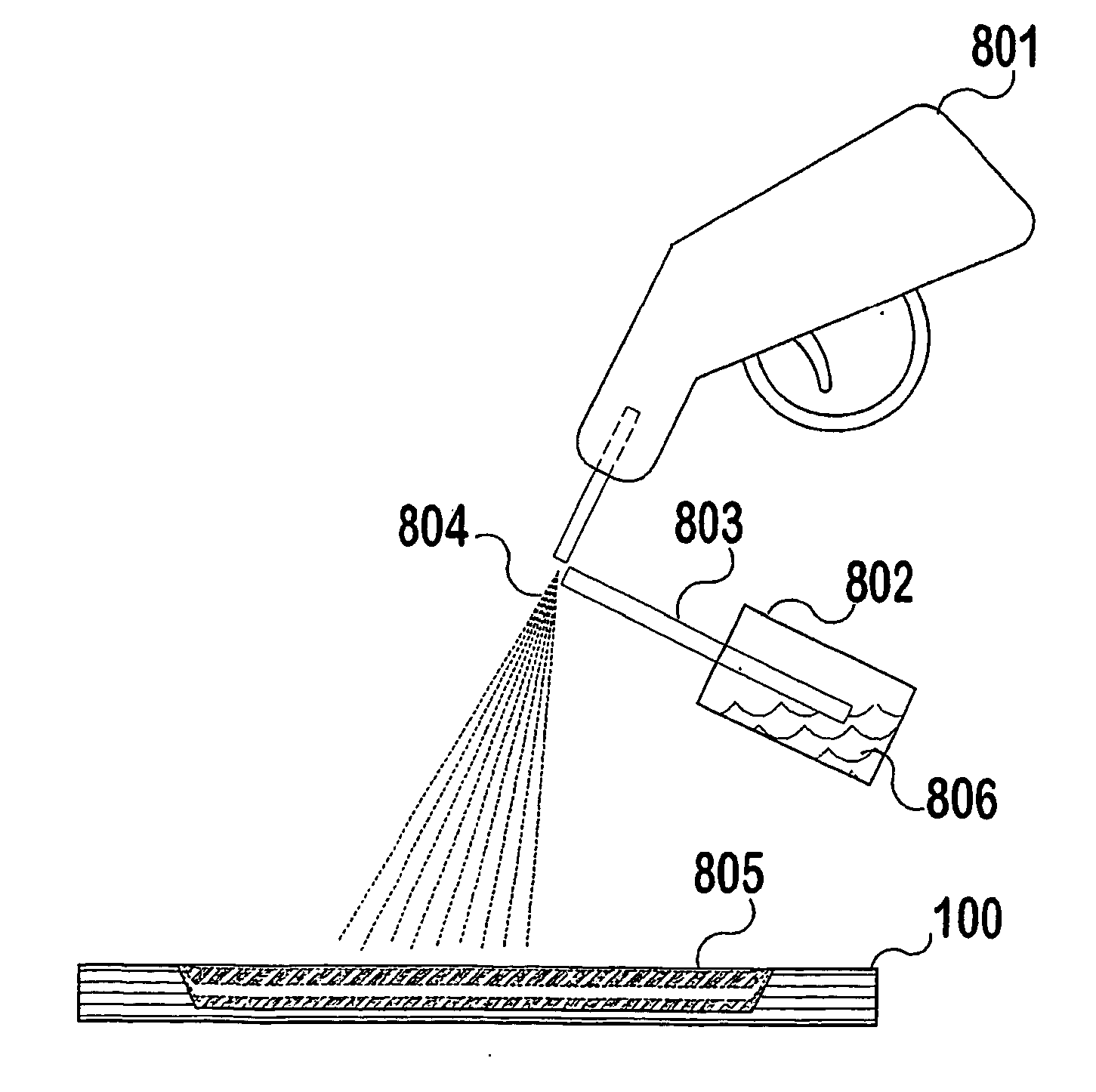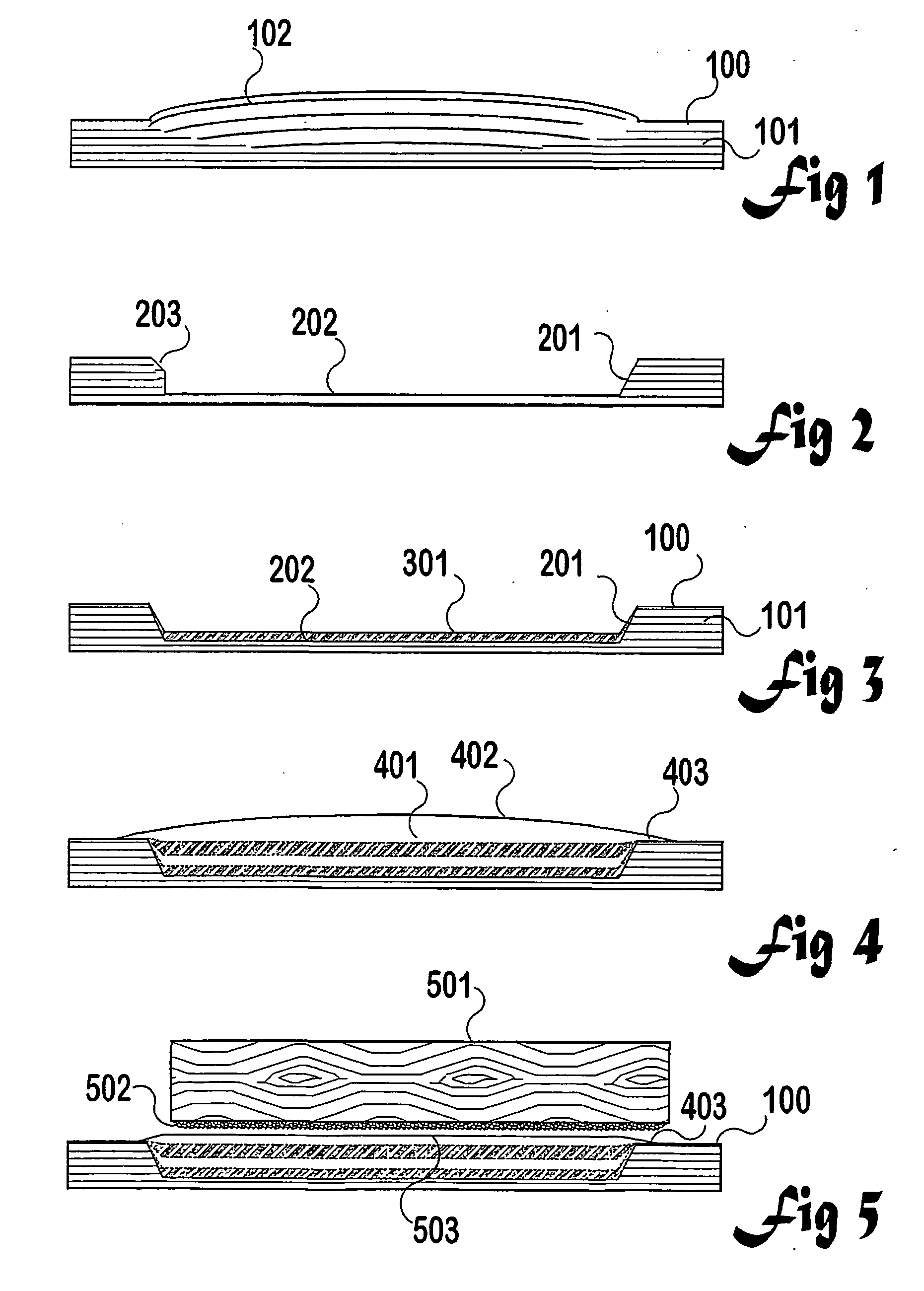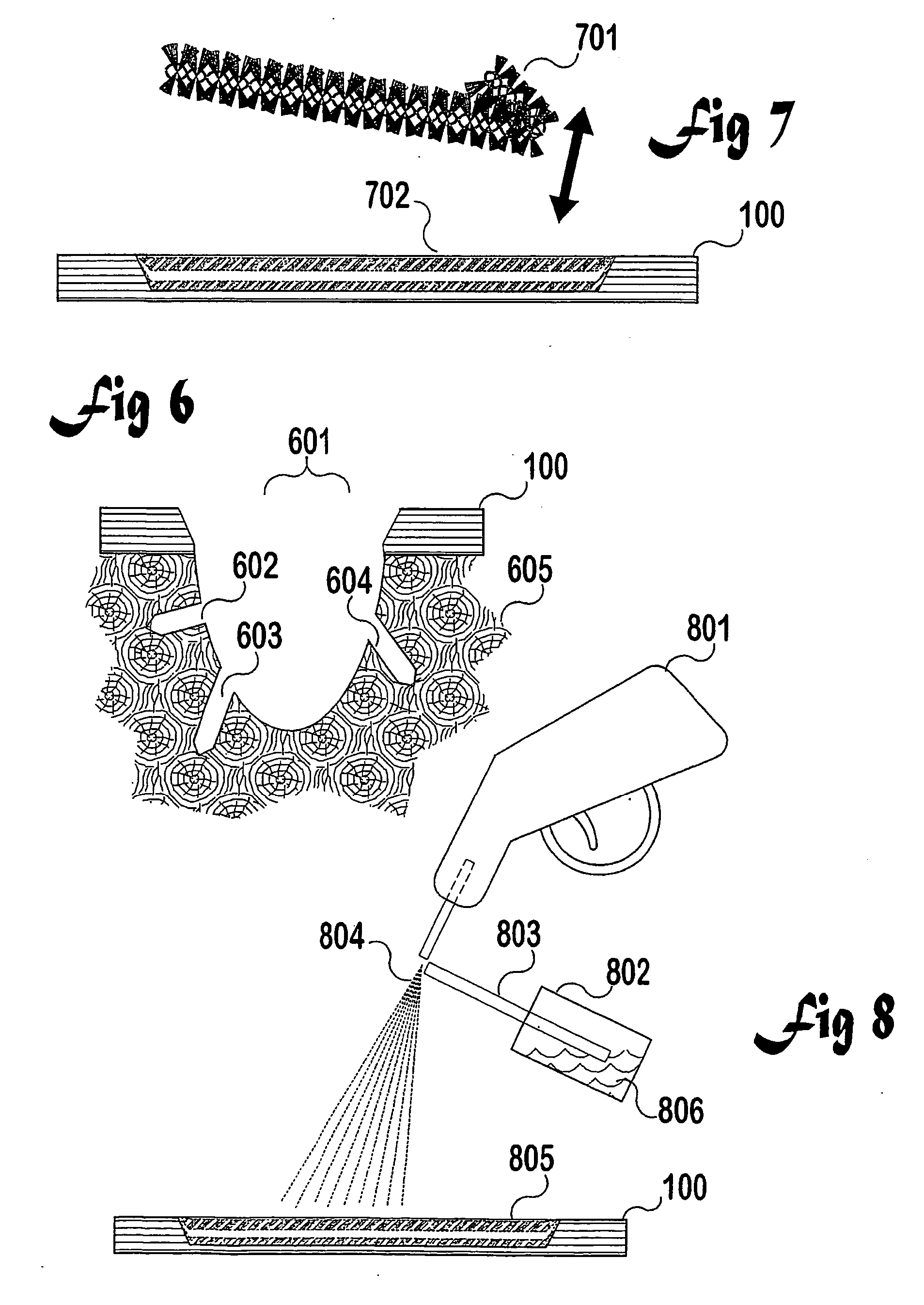Method for restoring a plastics surface
a plastics surface and surface technology, applied in the direction of liquid/solution decomposition chemical coating, solid/suspension decomposition chemical coating, superimposed coating process, etc., can solve the problem affecting the appearance of the surface, and causing the surface to be melted. , to achieve the effect of reducing the height of the surfa
- Summary
- Abstract
- Description
- Claims
- Application Information
AI Technical Summary
Benefits of technology
Problems solved by technology
Method used
Image
Examples
example 1
Mottled Pattern: (with no strong colours)
[0052] This is the easiest type of pattern to match. Apply a drop of a selected ProColour composition to a pipe cleaner (an example of a brand which has cotton, not synthetic fibres). Pigment is applied with the pipe cleaner over the area to be re-coloured by gently dabbing in order to vary the intensity, amount and tone of the colours. By rubbing the pipe cleaner on newspaper, mixing until the desired tone is required, then dabbing on to the damaged area, the mottled effect will develop. FIG. 7 shows this process. The end 701 of the pipe cleaner is preferably bent back as shown. Pigment is thereby placed on the surface 702. A heavy push with minimal dye will have the effect of slightly altering tone or blending across two colours. A fine touch with a minimal amount of dye will give a fine dot. A heavy coating with a lot of dye will give a smudge effect. Slight brushing gives lines, etc.
[0053] When the pattern develops a user may find the col...
example 2
Mottled Pattern: (high gloss, heavily textured, and definite colours).
[0058] This is the same process as above but to achieve the desired pattern the colours should usually be mixed separately to achieve the consistency required. Using the lid of a mixing pottle mix a small quantity of one of the desired colours. Do not worrying about getting the colour correct at the start, as above the repair has to blended across from the brown substrate and white background closer to the actual surface colour / s of the bench before it can be finally matched up. Apply with pipe cleaner as before and repeat with other colours. As soon as a general coverage across the dark brown and various colours has been achieved apply a thin coat of ProSeal with the FastCure. This will prevent smudging. Repeat as required until the pattern is matched up. Colours can always be altered as you progress continually getting closer (or further away) to what you want. Adjust the ProSeal to get the desired texture and g...
example 3
Fleck Pattern: (very fine dots of definite colours).
[0059] As above, but it is more difficult to replicate the fine spots. Always use a few pieces of newspaper to set your gear out on and always test your colours and quantities on this before applying to the pattern. To help replicate fine fleck patterns use very light coats of ProSeal at regular intervals but with the SlowCure. As soon as this is tacky you can use the tackiness to >the fine dots off your pipe cleaner and into the pattern. Another way to apply fine dots is by spraying a ProSeal with flecks suspended in it. These repairs will take longer periods of time to build the fine effect back in.
PUM
| Property | Measurement | Unit |
|---|---|---|
| Mass | aaaaa | aaaaa |
Abstract
Description
Claims
Application Information
 Login to View More
Login to View More - R&D
- Intellectual Property
- Life Sciences
- Materials
- Tech Scout
- Unparalleled Data Quality
- Higher Quality Content
- 60% Fewer Hallucinations
Browse by: Latest US Patents, China's latest patents, Technical Efficacy Thesaurus, Application Domain, Technology Topic, Popular Technical Reports.
© 2025 PatSnap. All rights reserved.Legal|Privacy policy|Modern Slavery Act Transparency Statement|Sitemap|About US| Contact US: help@patsnap.com



